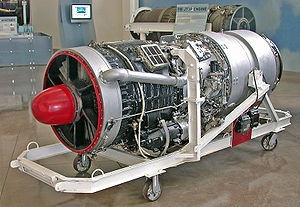Rolls Royce Avon
| Avon | |
|---|---|
 |
|
| Rolls-Royce Avon | |
| Type | Turbojet |
| National origin | United Kingdom |
| Manufacturer | Rolls-Royce Limited |
| First run | Spring 1946 |
| Major applications |
English Electric Canberra English Electric Lightning Hawker Hunter Saab 35 Draken Vickers Valiant |
| Number built | >11,000 |
The Rolls-Royce Avon was the first axial flow jet engine designed and produced by Rolls-Royce. Intended as a jet successor to the Merlin, introduced in 1950 it went on to become one of their most successful post-World War II engine designs. It was used in a wide variety of aircraft, both military and civilian, as well as versions for stationary and maritime power.
An English Electric Canberra powered by two Avons made the first nonrefuelled nonstop transatlantic flight by a jet, and a BOAC de Havilland Comet 4 powered by four Avons made the first scheduled transatlantic crossing by a jet airliner.
Production of the Avon aero engine version ended after 24 years in 1974.
The current version of the Avon, the Avon 200, is an industrial gas generator that is rated at 21-22,000shp. As of 2011, 1,200 Industrial Avons have been sold, and the type has established a 60,000,000 hour record for its class.
The engine was initially a private venture put forward for the English Electric Canberra. Originally known as the AJ.65 for Axial Jet, 6,500 lbf the engine was based on an initial project concept by Alan Arnold Griffith. which combined an axial compressor with a combustion system and single-stage turbine using principles proven in the Rolls-Royce Nene engine. The Avon design team was initially headed by Stanley Hooker until the development of the engine was moved from Barnoldswick to Derby in 1948 and Hooker subsequently left the company, moving to Bristol Engines. Design had started in 1945 and the first engine ran on March 25, 1947, with a 12-stage compressor. The engine was difficult to start, would not accelerate and broke first-stage blades. Two-position inlet guide vanes and compressor bleed were among the design changes which allowed the engine, as the RA.2, to run a 25-hour test and fly in the two outboard positions on the converted Avro Lancastrian military serial VM732, from Hucknall on August 15, 1948.
...
Wikipedia
